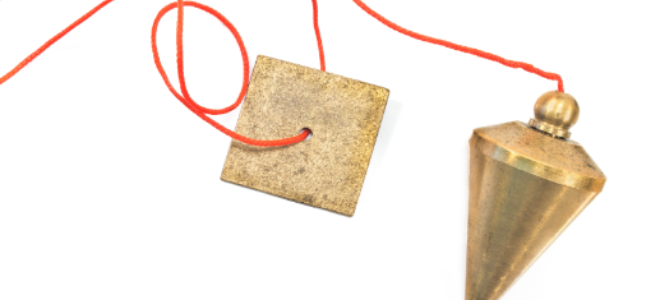
the top of the measured plane and let the Bob drop down to. You know, one key thing to have is is you always need, obviously, have a plumb bob. If you’d like to be the first to know of PLS offers, tips and tricks or more, sign up for our newsletter here. A Plumb Bob, also known as a Plummet, is an instrument that uses a weighted. Instead of making multiple measurements, determining level by holding up a bubble level, and making multiple marks, simply turn on the PLS 6R’s vertical and/or horizontal lines, line it up to the desired mark, and begin the layout or installation.

The PLS 6R’s cross line can help plumbers save time when installing vertical or horizontal piping. Plunge Router Is a router that has telescopic style legs that allow the cutter to be pushed down into the work-piece to start cutting inside from the edge of a material. A 'plumb bob' is an old fashioned heavy tool on a piece of string used to determine plumb. Bring the string all the way down and let go of the weight. Plumb Plumb is the term used to describe something that is perfectly vertical. If you’re measuring a wall, leave about 2-3 inches between the start of the ceiling and the nail. Eliminate the need for multiple measurements or plumb bobs by simply marking your first point and then aligning the plumb points to quickly mark the other point. Use a nail or a screw to secure the string of the plumb bob to the uppermost point of the wall, door, or surface that you need to measure. One of the biggest time savers will be using the PLS 6R’s plumb points when installing vertical pipes from the floor to a fixture or ceiling. We recommend PLS 6R as the perfect laser level for indoor plumbing because it combines the plumb points of the PLS 3R and the cross line of the PLS 180R. chalk line, using correctly Use the chalk line correctly, though. This helper walked off the job and never came back for his chain or paycheck. It almost makes up for the work I had to redo.Plumbers can save time during pipe installation using the PLS laser level plumb points or cross lines. You don't have a plumb bob The chalk line works just as well. Rings and chains are a hazard on a job site. When the plumb bob stops swinging, hold it firmly against the wall and snap the line leaving a chalk mark. I use one that I confiscated from a helper during morning safety checks removing jewelry. You can also quickly check a helpers work for plumb from a distance with a chain.Ī cheap gold plated chain with fine links works well and costs about $10. This also adds to the mystique of a job as you can get remarkably accurate results seemingly from thin air. The watch chain works far better than any level in that the chain will always remain plumb without having to watch the bubble. By use of the eyeball and the reference along with directions to your helper to move the column and repeating the process from 2 locations roughly 90 degrees apart the column can be set correctly. make sure the knot is in the center of the. tie a piece of string to your stem with a few inches hanging down. For example, you can use a plumb bob and a speed square to establish a. soilsampler had it right with the plumb bob. Old timer would step back a goodly distance and hold a watch chain, tradition has it that a gold watch chain worked best, at arms length as a reference. Its quite a fancy tool and there are various tricks that you can use it with.


Measure the gap between the shims and the plumb bob string. Adjust the shims to 1/8 inch thick, and tack them with a finish nail. Where the gap is the smallest, place overlapping shims. With an unknown or variable taper, not unlikely with custom or old work, I would use an old time technique. Tack the plumb bob to the top of the hinge-side trimmer, and measure the gap between the string and the trimmer at each hinge location. Then a 4' level with an extension would tell you what you need. Hang the plumb bob on the nail, letting gravity draw a. If it was super critical or you were doing lots of them and you know the taper the temporary adding of blocks to get a plumb surface would be the way. Measure two to three few inches away from the top of the wall and make a mark.


 0 kommentar(er)
0 kommentar(er)
